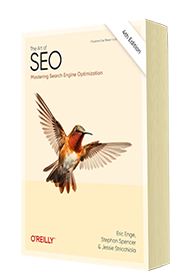Killer Content
In real estate, it’s “location, location, location”. In web marketing, it’s “content, content, content”. Your web content is the single most important factor for your website’s success, whether it’s a corporate, retail, university, government site, or even an intranet. Great or “killer” content keeps the attention of the highly impatient, scan reader. At the same time, it ranks well in search engine results (through search engine optimisation). So if you want your website to be truly effective, put content first and technology second.
Irishman Gerry McGovern, an internationally acclaimed guru on website content, spoke at a recent Wellington conference on the topic. McGovern has spoken, written and consulted extensively on web content and knowledge management issues since 1994. He’s published two books: Content Critical and The Web Content Style Guide, and a third, titled Killer Web Content, is due out later this year.
McGovern reckons most websites, until recently, have been administered rather than managed. Stuff was put up on them and then left there. Here’s his 12 tips on creating and maintaining killer web content:
Quality over quantity: Publish the size of website you can manage easily. Too many websites are a dumping ground for obsolete or irrelevant information. The value you deliver matters more than size.
Fresh: Continually ensure your site has accurate, up-to-date content. This is a growing problem, particularly for government websites. At past workshops, McGovern asked web managers to stand up if they could swear in a court of law that all of their website content was accurate. Nobody stood. He asked the same question at the recent Wellington conference. Again, everyone remained seated.
Have a common web information layout: This is especially true for all government websites. If every government website looked the same from a layout point of view, it would save citizens a lot of hassle. Otherwise, site visitors have to spend time figuring out how the website works, instead of completing the task they came to the website for.
Task completion: Identify the top three tasks for your website and make sure they shine. Task completion is the only real measure of website success.
Action versus reaction: If a visitor to the site does something on your web site that then results in a lengthy wait they won’t bother coming back. The time they spend on their action should be matched by the time it takes the website to react. For example, clicking on the File menu tab only takes a second, so the time it takes for the menu bar to appear underneath should take no more than a second.
80/20 rule of content: For many sites, less than 20% of the site content accounts for over 80% of the page views. On Microsoft.com, 1% of content accounted for 99% of the page views. In fact, 35% of its pages had never been viewed. That’s well over a million pages of content, which people at Microsoft worked hard to write — for nothing. Focus your efforts on the copy that will be read, not on the copy that won’t.
Columns: Readers use their peripheral vision to keep track of the beginning of the next line down while they are reading across a line. So it becomes difficult to read text that has a long line width. McGovern recommends a three-column format, with 20% or so of the width going to the first column (use this column for navigation), 60% dedicated to the middle column, and the remaining 20% or so for the right hand column.
Call for action: Always end your pages with a clear action for the reader to take. Never leave the reader hanging, wondering what to do next. The centre column at the end of the body copy is a critical piece of real estate for these calls for action.
Links: Links in the middle of body copy distract readers, making it difficult for them to read the paragraph. The message you’re giving them is, “Click on me, the rest of this text is really boring!” Instead of embedding links within the body copy, consider using the right hand column for the related links. You can also repeat them underneath the body copy in the centre column.
Simplicity: Einstein purportedly said, “Everything should be made as simple as possible, but no simpler.” Apply this to your web copy. Web readers tend not to read long copy. Typically, with a 300 word page, 50% will read it to the end, 20% will read 500 words, and 5% will scan 1,000 words. McGovern advises headings should be around four to eight words, summaries 30 to 50 words, sentences 15 to 20 words, and paragraphs 40 to 70 words.
Kill your darlings: If there’s a particular expression or way of saying something that you’re particularly fond of, delete it from your copy, because you’re probably overusing it.
Search engine optimise: Incorporate words into your page that people care about an type into the search engines. People are unlikely to find you under search words you don’t use yourself in your body copy or page titles. Tools like the one at inventory.overture.com can help you find out what words are popular with searchers.
Comments

Chapter 6:
Keyword Research
From the fundamentals of link building to the nuances of natural linking patterns, virality, and authority.
Related Posts

Thursday Three: Embrace Journaling, Tackle Tardiness, and Explore Our Energetic Echo
Here’s what I found inspirational, challenging, or just downright hilarious this week. What caught your eye? And, remember to check out this week’s great podcast episodes: Scaling a SaaS Company with Jason Morehouse “A crucial factor to business success is to find and take the personal path that works best for you.” — Jason Morehouse […]
Read More
Thursday Three: Harrison’s harmony, conquering a blank canvas, & gut health hacks
Here’s what I found inspirational, challenging, or just downright hilarious this week. What caught your eye? And, remember to check out this week’s great podcast episodes: Be a Sales Game Changer with Fred Diamond “True elite sales professionals develop a dedicated mindset, proactive client interaction, and continuous self-preparation. They understand their client’s needs and enable […]
Read More
Thursday Three: Rebirth of sleeper trains, 4,000 weeks is a long/short time, and golden age for medicine
Here’s what I found inspirational, challenging, or just downright hilarious this week. What caught your eye? And, remember to check out this week’s great podcast episodes: A Story Worth Retelling with Luke Storey “Aligned values are the cornerstone of successful partnerships, whether in business or life, as they shape our moral code, define our priorities, […]
Read More